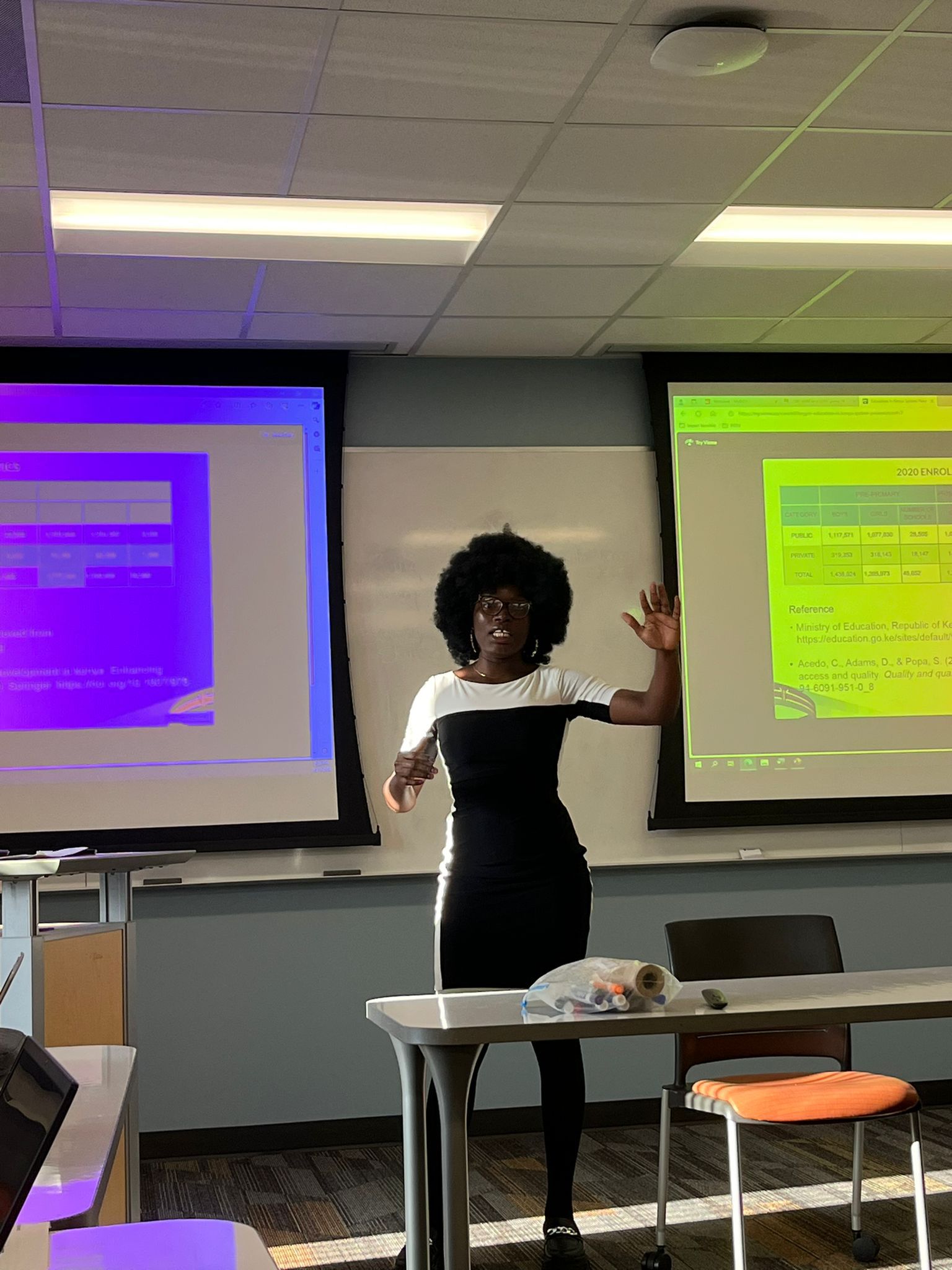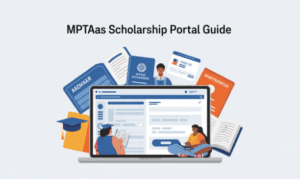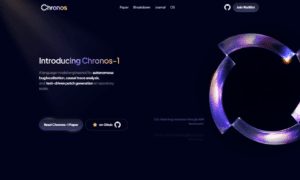Across classrooms around the world, the promise of education as a liberating force still eludes millions of students who live at the margins of the academic experience. For those with speech and language delays, especially in mainstream secondary schools, the challenges are multilayered and profound. Communication barriers intersect with emotional hurdles, academic struggles, and systemic gaps in support, often leaving students to navigate school life feeling invisible and unheard. But one academic voice is gaining international recognition for challenging this status quo with a bold, creative, and deeply human approach. That voice belongs to Ginikachi Prisca Ifenatuora, an independent researcher based in Ohio, whose recent study is redefining how speech development can be taught in inclusive classrooms and who gets to have a voice in the first place.
Her peer-reviewed article, Advances in Arts-Integrated Pedagogy for Speech Development in Inclusive Secondary Classrooms, published in the International Journal of Scientific Research in Science, Engineering and Technology, has ignited a fresh wave of interest in how the arts can serve not as extracurricular embellishments, but as vital pedagogical tools. In it, Ifenatuora proposes that the integration of drama, music, and visual arts into everyday teaching practices can provide adolescents with speech and language difficulties the opportunity to express, grow, and participate fully in academic life. The idea is not merely that the arts are helpful, but that they are central and essential conduits through which language can be discovered, practised, and owned.
Born in Nigeria and now residing in the United States, Ifenatuora’s academic journey has always been animated by a keen sensitivity to inclusion. Her work has taken her from resource-constrained classrooms in Africa to multicultural school districts in the American Midwest. In these spaces, she has witnessed firsthand the silent isolation of students who, due to language impairments, often sit through lessons without ever speaking a word. Her research is grounded not only in theory but in observation, empathy, and a relentless belief in education as a space where all children should be able to speak and be heard.

In an interview, Ifenatuora reflects on what drives her. “I am passionate about giving children back their agency,” she says. “When you sit in classrooms where a student hasn’t spoken in weeks, not because they have nothing to say, but because they lack the confidence or mechanism to say it, you start to realise that speech development is not just a clinical issue. It is a justice issue. And the arts, I’ve found, are one of the most powerful tools we have to bridge that gap.”
The context in which her work emerges is critical. Globally, inclusive education policies are gaining momentum, but implementation remains uneven. In many secondary schools, particularly in underserved communities, speech and language therapy is limited or siloed. Pull-out interventions, often offered in isolated rooms, do not always transfer to real-world classroom settings where communication matters most. These traditional models may support clinical progress, but they frequently fail to build confidence or social inclusion.
Adolescents, meanwhile, face increasing academic and emotional pressures. The ability to express ideas, debate, and collaborate with peers becomes central to school success. For students with speech challenges, this developmental stage can be daunting. They are often misunderstood or underestimated. The urgency for a more integrative, empowering approach is clear, and Ifenatuora’s research directly responds to that need.
Drawing from a robust foundation of educational theory, she frames her research through the lenses of Howard Gardner’s Multiple Intelligences, Lev Vygotsky’s Sociocultural Theory, and John Dewey’s Art as Experience. Gardner’s model validates multiple modes of learning and expression beyond verbal-linguistic ability. Vygotsky’s insights into social learning highlight the importance of interaction and cultural tools. Dewey, meanwhile, saw art as central to the learning process, not simply decoration or performance.
Ifenatuora synthesises these theoretical perspectives into a practical and scalable model. In her framework, drama becomes a rehearsal ground for voice modulation, sequencing, and turn-taking. Music activities reinforce rhythm, memory, and articulation. Visual art supports narrative construction and descriptive language. These art forms act not as separate interventions, but as core mediums for language development, integrated directly into subject teaching.
Her model revolves around three interrelated pillars: collaboration, creativity, and feedback loops. Group work fosters peer interaction and removes the pressure of speaking in isolation. Collaborative tasks, such as skits or shared visual projects, provide safe and social contexts for practising language. Creativity, on the other hand, unlocks new channels of expression. Students who resist conventional speech exercises may thrive when embodying a character or explaining a painting. Feedback, in this model, is formative and continuous. Teachers and peers respond in real time, supporting improvements in fluency, clarity, and confidence without fear of formal evaluation.
“The classroom must be a space of dialogue,” she says. “Students need to be heard before they can be corrected. And feedback must be part of an active conversation, not just a red mark on a worksheet.”
Importantly, Ifenatuora’s framework is rooted in inclusive pedagogy. She advocates for differentiated instruction that supports students with a range of verbal competencies. A learner with severe expressive delays may use pre-scripted lines in a play, while another may improvise or narrate. Visual prompts, movement, and even sound-based cues are woven into lessons to support all learners. Her approach aligns with the United Kingdom’s commitment to adaptive teaching, as highlighted in recent Ofsted guidelines, which call for classroom environments that respond to need without reducing expectations.
The UK context is particularly relevant. While inclusive education has made strides, SEND provision remains under significant strain. According to government reports, demand for speech and language support has surged, especially following the disruptions of the COVID-19 pandemic. At the same time, arts education is often among the first to face funding cuts. Ifenatuora’s model challenges this trend by showing that creative practice is not a luxury, but a lifeline for students at risk of disengagement.
“In the UK, I’ve seen both extraordinary innovation and worrying shortfalls,” she notes. “There are schools doing brilliant work with very little, but also schools where students with speech difficulties are invisible. My goal is to bridge those realities with tools that are effective, accessible, and rooted in research.”
What sets her approach apart is its practicality. Unlike interventions that rely on specialist equipment or full-time therapists, her arts-integrated model is designed to work within existing classroom structures. Teachers can use ordinary materials—paper, voice, movement, colour—to create extraordinary results. Her emphasis is on training teachers to become facilitators of expression, not experts in art or therapy.
“Teachers are often overworked and under-supported,” she acknowledges. “This model isn’t about adding more to their plate. It’s about transforming what’s already on it into something more engaging and inclusive.”
Ifenatuora is currently developing training modules in collaboration with UK-based educators and therapists. These modules are intended for Key Stage 3 and 4 staff and aim to help teachers embed arts-based speech strategies into everyday subject teaching. A pilot programme is scheduled to begin in selected schools in Greater London and Birmingham next year.
Her work has already been featured in professional development webinars and referenced in SEND department discussions across the UK. NGOs focused on neurodiversity, as well as local authorities looking to improve language outcomes among underperforming groups, are turning to her research for guidance.
But her mission is far from academic. Beneath the citations and conference panels is a deeply personal commitment. Ifenatuora’s educational journey, which spans Nigeria, the United States, and now the UK, has shown her how systems can uplift or erase voices. She has experienced what it means to be marginalised for how one speaks, and she has witnessed the transformative power of storytelling, music, and shared performance.
“I know what it feels like not to be heard,” she reflects. “But I also know how powerful it is to perform your truth, to sing your story, to draw your voice into the world. That’s what I want for every student. Not just to find their words, but to believe those words matter.”
At a time when British schools are facing a crossroads—balancing the demands of academic performance with the moral imperative of inclusion—her work offers a refreshing, practical vision. It invites educators to reconsider not just what they teach, but how and why. It argues that the arts are not peripheral to academic success, but deeply embedded in the formation of confident, expressive, and resilient learners.
Perhaps most importantly, it reframes speech development as a shared social responsibility. No longer confined to the therapist’s office, language learning becomes part of the everyday rhythm of school life. Every song, every sketch, every dialogue becomes a step toward empowerment.
As the education sector continues to search for solutions that are inclusive, affordable, and effective, Ginikachi Prisca Ifenatuora’s voice is one worth listening to. Her work does not simply offer a new tool, but a new perspective—one that puts expression, creativity, and humanity back at the centre of learning.
And in a world where far too many children are still waiting to be heard, that perspective could not be more timely.


































